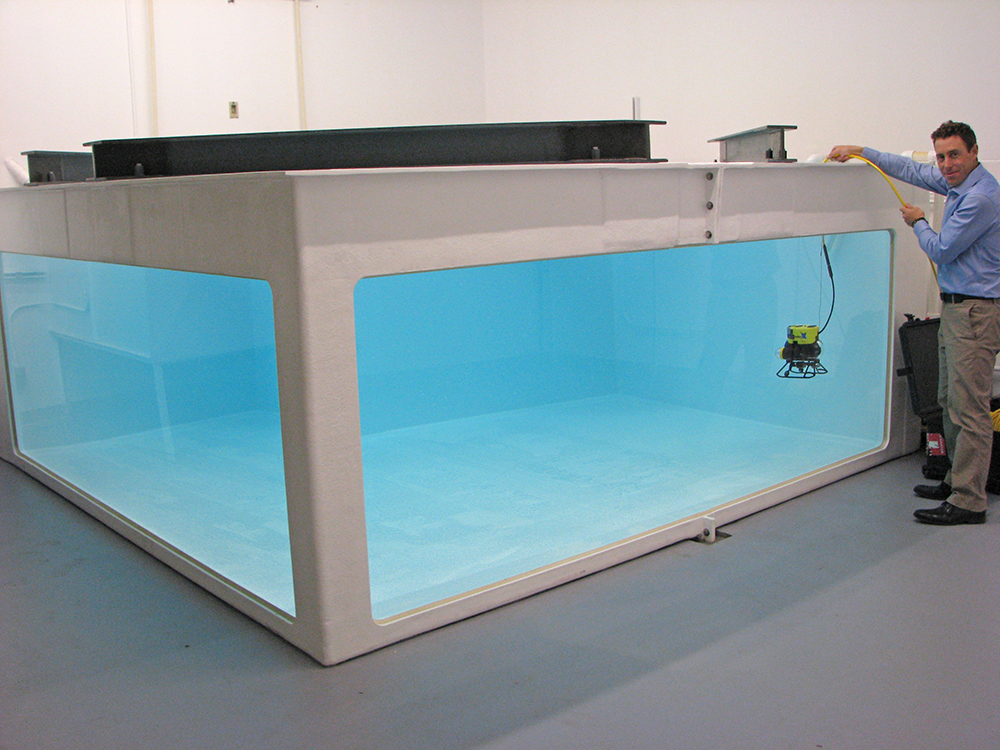Harvey Mudd Receives Funding for Underwater Robotics Lab
November 4, 2015
A grant from the Hearst Foundation to create an underwater robotics laboratory means Harvey Mudd College students and faculty will no longer have to use a faculty member’s private swimming pool to deploy and test underwater robot systems.
The $100,000 grant, combined with $26,000 from a previous National Science Foundation grant and about $10,000 in institutional funds, will pay for a large water tank with a vision-based positioning system, associated computer technology, an observation platform and workspace.
The new lab, built in the basement of the Parsons Engineering Building, will complement an existing robotics laboratory.
“This facility will provide an essential tool for both teaching and research,” says engineering Professor Christopher Clark. “It will provide a location for conducting labs as part of our new engineering sophomore course sequence, the first course of which will be required for all students at Harvey Mudd.”
Beginning in spring 2017, students enrolled in Experimental Engineering (E80) will work in teams with remotely operated vehicles (ROVs) to design and build their own sensor packages. The course will culminate in the deployment of these ROVs in the ocean.
Robotics engineering is a technological frontier with many scientific applications that builds on the College’s existing strengths in engineering, computer science and other interdisciplinary sciences.
Students are attracted by the novelty of robots, the excitement of underwater exploration and opportunities for creative interdisciplinary applications. Recent experience at Harvey Mudd College and other colleges has shown that robotics is a powerful gateway into engineering and computer science for women and other groups traditionally underrepresented in science.
Harvey Mudd College—a national leader in making research and experiential learning part of the undergraduate curriculum—has developed several robotics courses and research projects involving robotics. Students have built, programmed and learned to operate robots that use visual information to navigate on the ground or in flight.
They have designed robots to explore and map lava tubes in the Mojave Desert in simulations of extra-planetary exploration; used autonomous underwater vehicles (AUVs) to track the migration patterns of leopard sharks off the Southern California coast; and used remotely operated vehicles (ROVs) to map underwater archaeological features in Malta and Sicily.
“With respect to research, this lab will provide the test site for the first prototypes of new underwater robot technology, including acoustic communication between robots, sonar modeling, control theory validation and state estimation performance,” Clark said.
Robotics projects are included in Harvey Mudd College’s current $358,068 NSF Research Experience for Undergraduates grant in computer science. And earlier this year, the College was awarded a three-year, $449,521 grant from NSF to continue work in underwater robotics specifically.
The laboratory will not only serve Harvey Mudd College students but will be a unique resource for all Claremont Colleges students. Pomona College has a robotics laboratory within its computer science department but no engineering program or facilities for underwater robotics. Claremont McKenna College offers a major in computer science but has no special facilities for robotics.
With the addition of the underwater robotics laboratory, Harvey Mudd College is well positioned to respond to the current surge of interest in robotics among Claremont College students and others nationwide.
